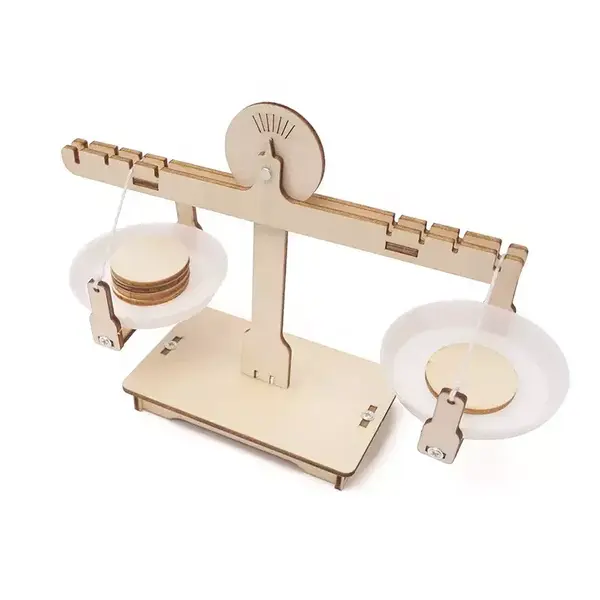Law of the lever principle – Balance and weight law model
29,00 AED
The law of the lever is a fundamental concept in physics, and it can be demonstrated using a straightforward model:
Components of the Lever Model:
- Fulcrum:
- The fulcrum is a fixed point around which the lever rotates. It acts as the pivot for the lever.
- Lever Arm:
- The lever arm is a rigid beam or bar that extends on either side of the fulcrum. It can vary in length.

Product Details
Reviews
Product Details
Objective:
Demonstrate a model of the Law of the Lever Principle to explain balance, weight distribution, and the mechanics of levers
Materials included:
Wooden Balance Structure
Materials not included in the kit:
Procedure and assembly steps:
Procedure included in the kit manual . This is not a ready made product. Student needs to follow the steps to assemble the model…
Description:
The Law of the Lever Principle: Balancing Weights
The law of the lever is a fundamental concept in physics, and it can be demonstrated using a straightforward model:
Components of the Lever Model:
- Fulcrum:
- The fulcrum is a fixed point around which the lever rotates. It acts as the pivot for the lever.
- Lever Arm:
- The lever arm is a rigid beam or bar that extends on either side of the fulcrum. It can vary in length.
- Weights:
- We place weights or objects of different masses on each end of the lever arm. These weights represent forces that need to be balanced.
- The force on one side of the lever is balanced by an equal force on the other side.
- The distance from the fulcrum to the point where the force is applied is called the lever arm or moment arm.
- Imagine you have a heavier weight on one side of the lever and a lighter weight on the other side. To achieve equilibrium, you must adjust the position of the weights along the lever arm.
- If the heavier weight is closer to the fulcrum, it exerts less torque (rotational force) than the lighter weight farther from the fulcrum. To balance the lever, you need to move the heavier weight farther from the fulcrum or adjust the position of the lighter weight.
- Eventually, you’ll find a point where the lever becomes balanced. At this point, the torque produced by the heavier weight is equal and opposite to the torque produced by the lighter weight, resulting in a state of equilibrium.
Learning outcome:
Have a better understanding of the Law of the Lever Principle to explain balance, weight distribution, and the mechanics of levers using the model built by the student in this project
Section or subject:
Physics
Grades:
6+
Reviews
Be the first to review “Law of the lever principle – Balance and weight law model” Cancel reply













Reviews
There are no reviews yet.